Related Research Articles
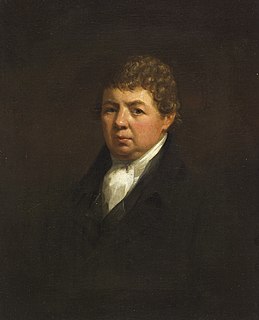
John Jamieson was a Scottish minister of religion, lexicographer, philologist and antiquary. His most important work is the Dictionary of the Scottish Language.
The United Presbyterian Church (1847–1900) was a Scottish Presbyterian denomination. It was formed in 1847 by the union of the United Secession Church and the Relief Church, and in 1900 merged with the Free Church of Scotland to form the United Free Church of Scotland, which in turn united with the Church of Scotland in 1929. For most of its existence the United Presbyterian Church was the third largest Presbyterian Church in Scotland, and stood on the liberal wing of Scots Presbyterianism. The Church's name was often abbreviated to the initials U.P.
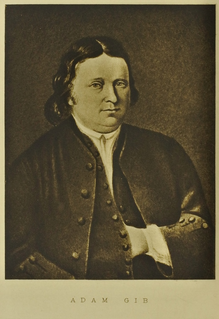
Adam Gib was a Scottish religious leader, head of the Antiburgher section of the Scottish Secession Church. He reportedly wrote his first covenant with God in the blood of his own veins. Gib was born in the parish of Muckhart, in southern Perthshire on 15 April 1714.
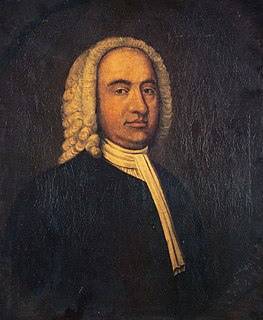
Ebenezer Erskine was a Scottish minister whose actions led to the establishment of the Secession Church.

Ralph Erskine was a Scottish churchman.
Thomas Gillespie was a Scottish minister of the Church of Scotland. He was founder of the Synod of Relief. Thomas Gillespie, born in 1708, at Clearburn, Duddingston, was the son of a well-to-do brewer and bonnet-laird — the only son of a second marriage. An interview with Thomas Boston, arranged by his mother, turned his thoughts to the ministry. On the completion of his Arts course in Edinburgh, he entered the Divinity Hall. After some months, however, he left for the Divinity Hall of the Secession Church in Perth. A few weeks’ experience of its narrowness being more than enough, he betook himself to Northampton to complete his studies under Philip Doddridge. He was ordained by a "classis" of the English Presbyterians. Presented and called to Carnock, he was inducted by the Presbytery of Dunfermline in 1741. In the early years of his ministry he was a leader in the Cambuslang and Kilsyth Revivals, and became a trusted correspondent of George Whitfield and Jonathan Edwards. Taking his stand, with the majority of the Presbytery, against the Inverkeithing Intrusion, he was summarily deposed by the General Assembly of 1752. In 1761, with two other ministers and their flocks, he formed a new body — the Presbytery of Relief, which had attained a quite considerable place in many parts of Scotland, by the time of his death in 1774.
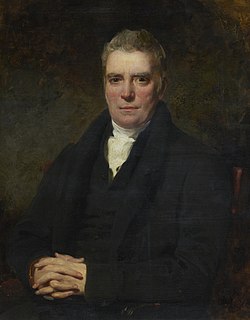
Thomas M'Crie was a Scottish biographer and ecclesiastical historian, writer, and preacher born in the town of Duns, and educated at the University of Edinburgh. He became the leading minister of the Original Secession Church. His work: "Life of Knox" (1813) was a means of vindicating the Scottish reformer John Knox who was a unpopular figure at the time. It was followed by a "Life of Andrew Melville" (1819). Melville was Knox's successor as the leader of the Reformers in Scotland. M'Crie also published histories of the Reformation in Italy and Spain. He received an honorary degree of D.D. in 1813, the first Secession minister to receive such an award.

The First Secession was an exodus of ministers and members from the Church of Scotland in 1733. Those who took part formed the Associate Presbytery and later the United Secession Church. They were often referred to as seceders.

William Anderson, LL.D. (1799–1872) was a Scottish theological writer and preacher. He was born at Kilsyth and studied at Glasgow University. He was the Presbyterian minister of John Street Relief Church, Glasgow in 1822. As an author he published The Mass, Penance, Regeneration and other theological works. He died near Glasgow, aged 72.

The Reformed Presbyterian Church of Scotland is a small, Scottish, Presbyterian church denomination. Theologically they are similar to many other Presbyterian denominations in that their office-bearers subscribe to the Westminster Confession of Faith. In practice, they are more theologically conservative than most Scottish Presbyterians and maintain a very traditional form of worship. In 1690, after the Revolution, Alexander Shields joined the Church of Scotland, and was received along with two other ministers. These had previously ministered to a group of dissenters of the United Societies at a time when unlicensed meetings were outlawed. Unlike these ministers, some Presbyterians did not join the reconstituted Church of Scotland. From these roots the Reformed Presbyterian Church of Scotland was formed. It grew until there were congregations in several countries. In 1876 the majority of Reformed Presbyterians, or RPs, joined the Free Church of Scotland, and thus the present-day church, which remained outside this union, is a continuing church. There are currently Scottish RP congregations in Airdrie, Stranraer, Stornoway, Glasgow, and North Edinburgh. Internationally they form part of the Reformed Presbyterian Communion.

James Fisher (1697–1775) was one of the founders of the Scottish Secession church. He was born at Barr, on 23 January 1697, the second son of Thomas Fisher, minister of Rhynd. He was educated at University of Glasgow. He was licensed by the Presbytery of Perth on 31 October 1722 and subsequently called and ordained on 23 December 1725. He dissented and joined with his father-in-law Ebenezer Erskine in his appeal and complaint to the Assembly of 1733. He was one of the four original members of the Associate Presbytery founded at Gairney Bridge on 6 December 1733. He was deposed by the General Assembly on 15 May 1740, but continued to preach in the parish church till 13 August 1741, when he was forcibly ejected on a sheriff's warrant. He then preached in a tent on Kinclaven brae during the time he remained in the district. On 8 October 1741 he became minister of Shuttle Street Associate Congregation, Glasgow. He was deposed by the Associate (Antiburgher) Synod on 4 August 1748 over the question of the Burgess Oath. He was appointed Professor of Divinity by the Associate (Burgher) Synod in 1749. He died on 28 September 1775.
The Relief Church was a Scottish Presbyterian denomination founded in 1761. In 1847 it united with the United Secession Church to form the United Presbyterian Church of Scotland.
The United Presbyterian Church, Thurso was a parish church of the United Presbyterian Church of Scotland, now extinct, in Thurso, Caithness. The original church was built in 1777 with seating for 590, and a newer building was erected around 1801.
William Cruden (1726–1785) was a Scottish minister and author.

Thomas Boston, the younger (1713–1767) was a Scottish minister of the Relief Church.
Thomas Mair was a Scottish Anti-Burgher minister and moderator of the Anti-Burgher Associate Synod.
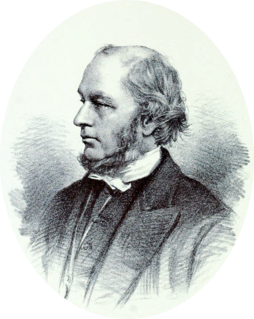
William Henry Goold was a Scottish minister of both the Reformed Presbyterian Church and the Free Church of Scotland. He was the last Moderator of the majority Reformed Presbyterian Church Synod before the union with the Free Church in 1876 when most of the R. P. congregations entered the union. He was also called to be Moderator of General Assembly of the Free Church in the following year: 1877.

Alexander Moncrieff (1695–1761) was a Scottish Presbyterian minister. He was the son of Matthew Moncrieff of Culfargie and Margaret Mitchell. His paternal grandfather, also Alexander Moncrieff, was a well known minister of Scoonie. He was educated at Perth Grammar School and St Leonard's College, St Andrews. He graduated with an M.A. and then attended a course of theology at Leiden under John a Marck and Wesselius. He was licensed by the Presbytery of Perth 29 April 1719 and called 26 April, and by Presbytery jure devoluto, 24 August, and ordained 14 September 1720. He sympathised with Ebenezer Erskine, and the Commission of Assembly on 9 August 1733 suspended him and three associates from the exercise of their ministry. As they refused obedience, on 16 November the Commission declared them no longer ministers of the Church. Moncrieff with his brethren met at Gairney Bridge 6 December 1733, and formed the Associate Presbytery. The General Assembly of 1734 reponed him to office. From 1734 to 1740 he preached from the parish church pulpit, occupied the manse, received the stipend, yet protested against the jurisdiction of the Church, declined to attend Presbytery meetings, or in any way to be amenable to ecclesiastical authority. He was finally deposed by the Assembly on 15 May 1740. He was appointed by the Associate Presbytery Professor of Divinity in February 1742. He joined with those who were against the Burgess Oath, and was one of the founders of the General Associate Synod 10 April 1747. He died on 7 October 1761.
William Wilson was born in Glasgow, on 9 November 1690. He was the son of Gilbert Wilson, proprietor of a small estate near East Kilbride.. William Wilson's mother was Isabella, daughter of Ramsay of Shielhill. William was named after William of Orange and was educated at University of Glasgow, graduating with an M.A. in 1707. He was licensed by the Presbytery of Dunfermline on 23 September 1713 and called unanimously on 21 August 1716. He was ordained on 1st November 1716. He had a call to Rhynd, but was continued by the Presbytery in Perth. Associating with the supporters of the Marrow of Modern Divinity, he with three others Ebenezer Erskine, Alexander Moncrieff, and James Fisher laid the foundation of the Secession Church, for which they were suspended by the Commission of Assembly 9 August, and declared no longer ministers of the Church 12 November 1733. He was deposed by the Assembly 15 May 1740. He and his people erected a meeting-house, and the Associate Presbytery appointed him their Professor of Divinity, 5 November 1736, but he sank under his contentions and labours and died 8 October 1741. He is said to have combined "the excellencies of both Erskines, with excellencies peculiar to himself."

John M'Millan was the founding Father of the Reformed Presbyterian Church. He was the first minister of the Cameronians after the Revolution Settlement. He was born at Minnigaff, near Newton Stewart in Kirkcudbrightshire, around 1669, and spent his boyhood near his birthplace. Before he began his ministerial career he was elected an elder of Girthon session. He attended Edinburgh University 1695-7, and graduated with an M.A. on 28 June 1697. He was licensed on 26 November 1700, spending part of his probation as tutor with the Laird of Broughton, 1700-1. He preached for the first time in Balmaghie Church on 22 December 1700, apparently as ordinary supply, and on 30 April 1701, was elected to the parish. The call was reported to the Presbytery on 24 June, and he was ordained on 19 September. The controversy regarding his ecclesiastical attitude lasted from October 1702 to 30 December 1703, when he was deposed. His name first appears in the minutes of the General Meeting of the Dissenters when they considered a letter from him, 5 April 1704. He conferred with its members on 31 January 1705, and 13 February 1706, and on 14 August 1706, submitted to them. The Societies called him on 9 October. The Covenants were renewed at Auchensaugh on 23–4 July 1712. M'Millan left the Balmaghie Manse in 1727, and during 1729-34 resided at different places in the parish of Carnwath, and at Braehead from 1734-53. The Presbytery was erected at Braehead on 1 August 1743, and a disruption took place in it in April 1753. He died at Broomhill on 1 December 1753.
References
- Citations
- 1 2 Walker 1888, p. 189.
- ↑ Naismith 1877, p. 80.
- ↑ Reid 1896, p. 191.
- 1 2 3 4 5 Scott 1923, p. 99.
- ↑ Mackelvie 1873, p. 441.
- ↑ Mackelvie 1873, p. 441-442.
- 1 2 Seccombe 1893, p. 232.
- ↑ Reformed Presbyterian Church in Scotland 1842, p. 185.
- ↑ The Reformed Presbytery in Scotland 1835, p. 113.
- ↑ Reformed Presbyterian Church in Scotland 1842, p. 187.
- ↑ Walker 1895, p. 253.
- 1 2 3 Couper 1925, p. 78.
- ↑ Couper 1925, p. 79.
- ↑ Hutchison 1893, p. 400.
- ↑ Hutchison 1893.
- Sources
- The Reformed Presbytery in Scotland (1835). Short Account of Old Dissenters. Belfast: Stuart and Gregg. pp. 107–138. Retrieved 17 April 2019.
 This article incorporates text from this source, which is in the public domain .
This article incorporates text from this source, which is in the public domain . - Reformed Presbyterian Church in Scotland (1842). Testimony of the Reformed Presbyterian Church in Scotland : historical and doctrinal. Glasgow: John Keith. Retrieved 19 April 2019.
 This article incorporates text from this source, which is in the public domain .
This article incorporates text from this source, which is in the public domain . - Brown, Peter (1859). Historical sketches of the parish of Cambusnethan. Wishaw: D. Johnston. pp. 44–52. Retrieved 5 January 2018.
- Couper, W. J. (1925). The Reformed Presbyterian Church in Scotland, its congregations, ministers and students. Scottish Church History Society. p. 78 . Retrieved 18 April 2019.
 This article incorporates text from this source, which is in the public domain .
This article incorporates text from this source, which is in the public domain .
- Ferrier, Andrew (1830). Memoirs of the Rev. W. Wilson, A.M. Glasgow: Robertson & Aktinson. Retrieved 13 July 2020.
- Hutchison, Matthew (1893). The Reformed Presbyterian Church in Scotland; its origin and history 1680-1876. Paisley : J. and R. Parlane. Retrieved 18 April 2019.
 This article incorporates text from this source, which is in the public domain .
This article incorporates text from this source, which is in the public domain .
- Mackelvie, William (1873). Annals and statistics of the United Presbyterian Church. Edinburgh; Glasgow: Oliphant and A. Elliot ; D. Robertson. Retrieved 13 July 2020.
 This article incorporates text from this source, which is in the public domain .
This article incorporates text from this source, which is in the public domain .
- McKerrow, John (1839a). History of the Secession Church. Vol. 1. Edinburgh: William Oliphant and Son. Retrieved 12 July 2020.
- McKerrow, John (1839b). History of the Secession Church. Vol. 2. Edinburgh: William Oliphant and Son. Retrieved 12 July 2020.
- McMillan, William (1950). The covenanters after the Revolution of 1688. Scottish Church History Society. pp. 141–153. Retrieved 18 April 2019.
- Murray, Derek B. "Macmillan, John". Oxford Dictionary of National Biography (online ed.). Oxford University Press. doi:10.1093/ref:odnb/29697.(Subscription or UK public library membership required.)
- Naismith, Robert (1877). Historical Sketch of the Reformed Presbyterian Church of Scotland: To Its Union with the Free Church in 1876. Edinburgh: Johnstone, Hunter & Company. p. 80 . Retrieved 18 April 2019.
- Reid, Henry Martyn Beckwith (1896). A Cameronian apostle: being some account of John Macmillan of Balmaghie. London: Alexander Gardner. p. 191-197. Retrieved 19 April 2019.
- Seccombe, Thomas (1893). . In Lee, Sidney (ed.). Dictionary of National Biography . Vol. 35. London: Smith, Elder & Co.
- Scott, Hew (1923). Fasti ecclesiae scoticanae; the succession of ministers in the Church of Scotland from the reformation. Vol. 5. Edinburgh: Oliver and Boyd. pp. 99 . Retrieved 8 July 2019.
 This article incorporates text from this source, which is in the public domain .
This article incorporates text from this source, which is in the public domain .
- Thomson, Andrew; Struthers, Gavin (1858). Historical sketch of the origin of the Secession Church and the History of the rise of the Relief Church. Edinburgh and London: A. Fullerton and Co. pp. 78-81. Retrieved 12 July 2020.
- Walker, James (1888). The theology and theologians of Scotland : chiefly of the seventeenth and eighteenth centuries (2nd ed.). Edinburgh: T. & T. Clark. p. 189 . Retrieved 22 April 2017.
 This article incorporates text from this source, which is in the public domain .
This article incorporates text from this source, which is in the public domain .
- Walker, Norman L. (1895). Chapters from the History of the Free Church of Scotland. Edinburgh: Oliphant, Anderson & Ferrier. Retrieved 22 April 2017.
 This article incorporates text from this source, which is in the public domain .
This article incorporates text from this source, which is in the public domain .